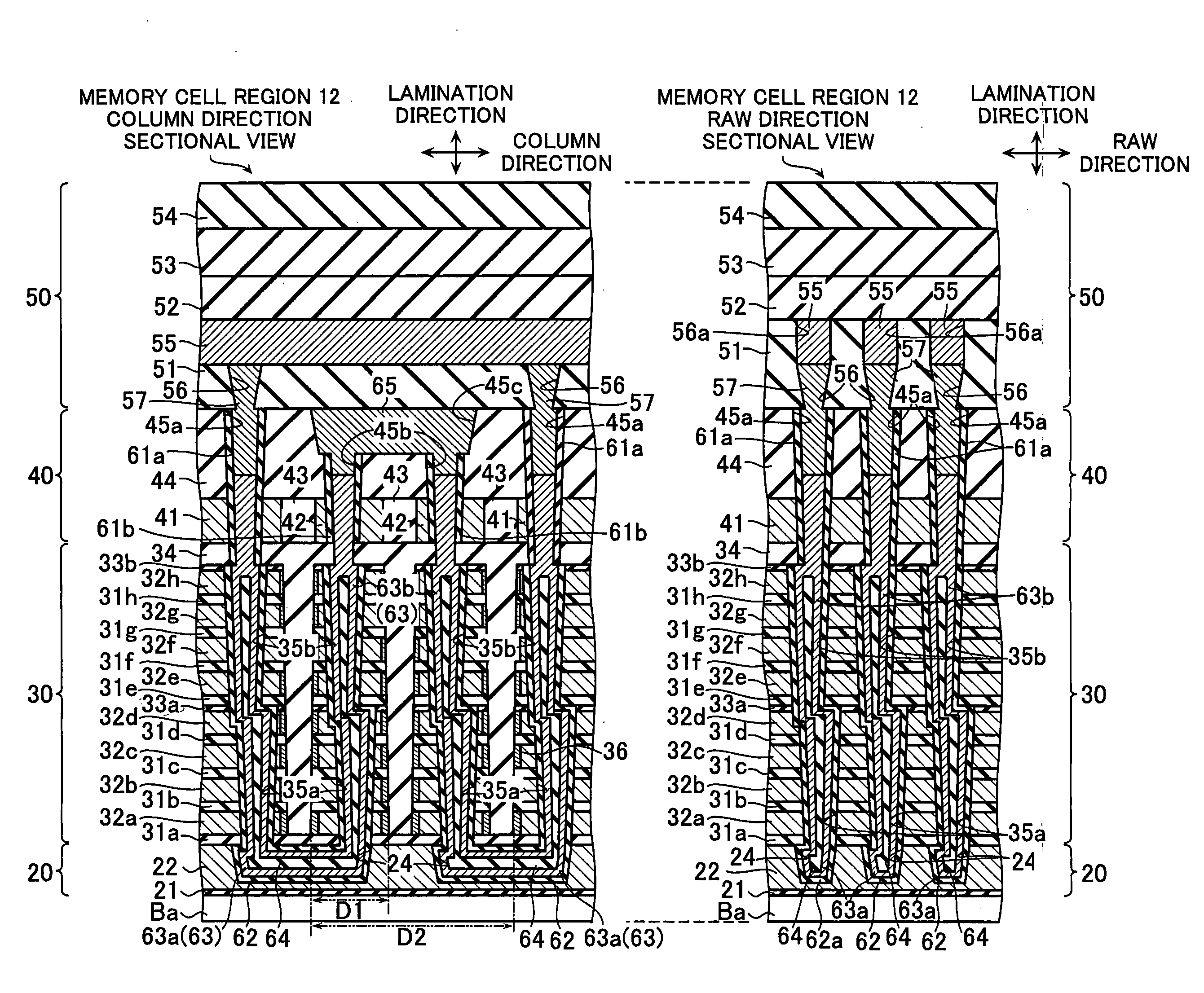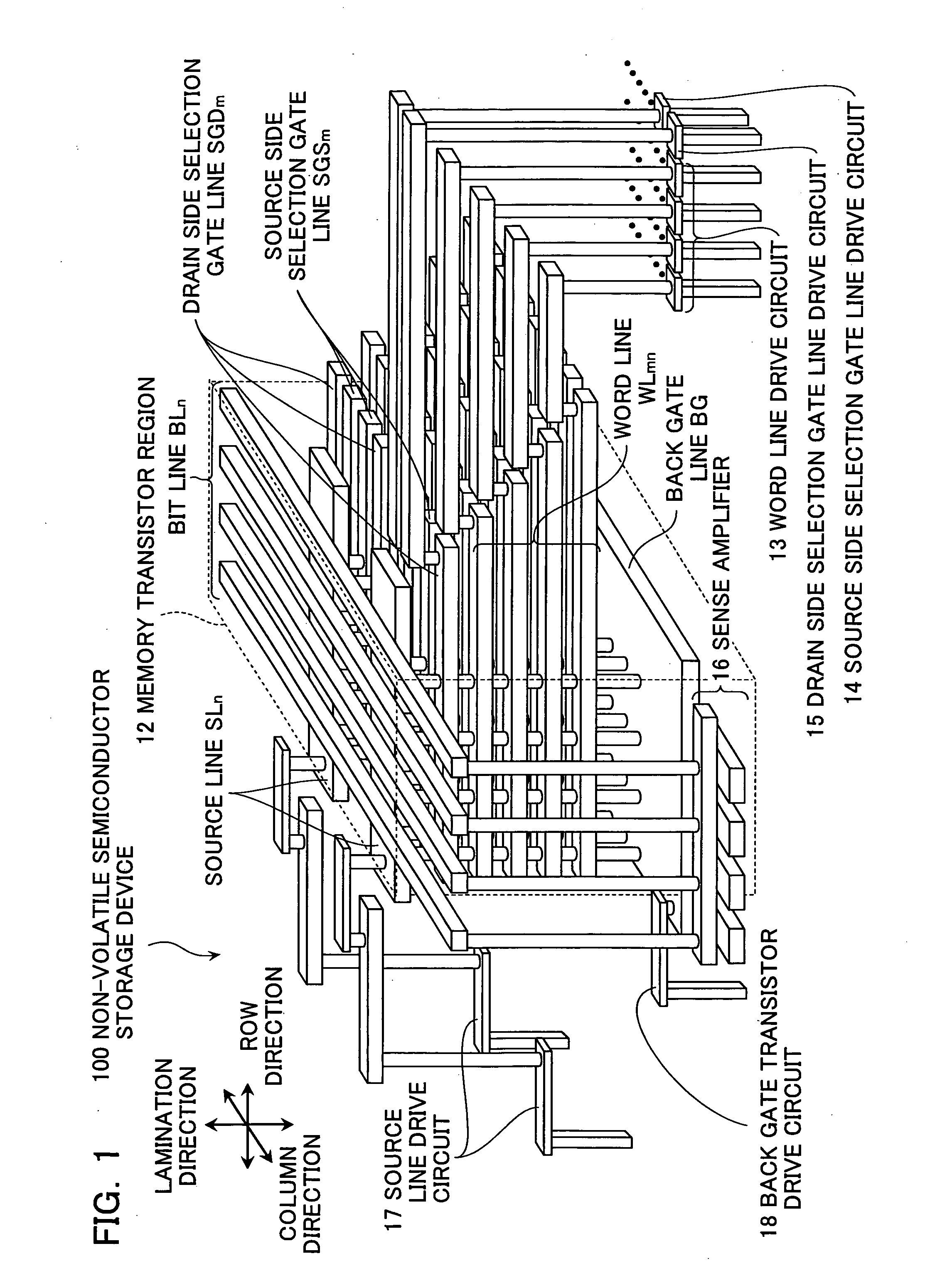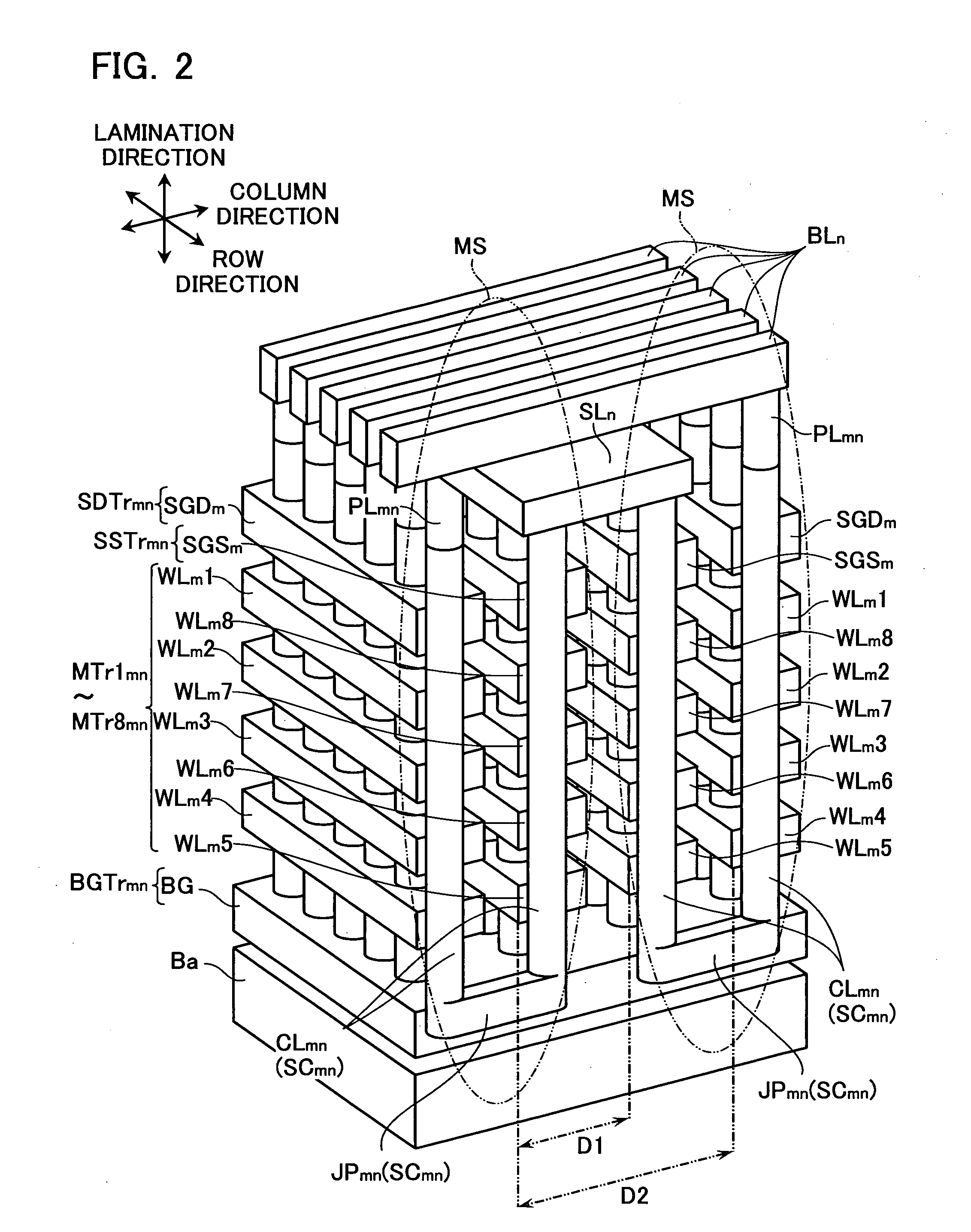Non-volatile semiconductor storage device and method of manufacturing the same
a non-volatile, semiconductor technology, applied in semiconductor devices, electrical equipment, instruments, etc., can solve the problems of increasing the cost and technology of lithography process, increasing the cost of lithography process, and achieving the physical limit of lithography
- Summary
- Abstract
- Description
- Claims
- Application Information
AI Technical Summary
Benefits of technology
Problems solved by technology
Method used
Image
Examples
first embodiment
[0060](Arrangement of Non-Volatile Semiconductor Storage Device 100 according to First Embodiment)
[0061]FIG. 1 shows a schematic view of a non-volatile semiconductor storage device 100 according to a first embodiment of the present invention. As shown in FIG. 1, the non-volatile semiconductor storage device 100 according to the first embodiment mainly has a memory transistor region 12, a word line drive circuit 13, a source side selection gate line (SGSm) drive circuit 14, a drain side selection gate line (SGDm) drive circuit 15, a sense amplifier 16, a source line drive circuit 17, and a back gate transistor drive circuit 18. The memory transistor region 12 has memory transistors for storing data. The word line drive circuit 13 controls a voltage applied to the word line WL. The source side selection gate line (SGSm) drive circuit 14 controls a voltage applied to the source side selection gate line SGS. The drain side selection gate line (SGDm) drive circuit 15 controls a voltage a...
second embodiment
[0176](Arrangement of Non-Volatile Semiconductor Storage Device according to Second Embodiment)
[0177]Next, an arrangement of a non-volatile semiconductor storage device according to a second embodiment will be explained referring to FIGS. 47 and 48. FIG. 47 is a schematic perspective view of a part of a memory transistor region of the non-volatile semiconductor storage device according to the second embodiment, and FIG. 48 is a sectional view of the memory transistor region.
[0178]As shown in FIGS. 47 and 48, a memory transistor layer 30a and a select gate transistor layer 40a in the non-volatile semiconductor storage device according to the second embodiment are arranged different from those of the first embodiment.
[0179]In the memory transistor layer 30a and the select gate transistor layer 40a, a source side selection gate line SGSm′ (source side conductive layer 421) and word lines WLm1′ to WLm8′ (first to eighth word line conductive layers 321a to 321h) are arranged different fr...
third embodiment
[0188](Arrangement of Non-Volatile Semiconductor Storage Device according to Third Embodiment)
[0189]Next, an arrangement of a non-volatile semiconductor storage device according to a third embodiment will be explained referring to FIGS. 49 and 50. FIG. 49 is a schematic perspective view of a part of a memory transistor region of the non-volatile semiconductor storage device according to the third embodiment, and FIG. 50 is a sectional view of the memory transistor region.
[0190]As shown in FIGS. 49 and 50, in the non-volatile semiconductor storage device according to the third embodiment, an arrangement of a back gate line BG′ (back gate transistor layer 20a) is different from the first embodiment. The back gate line BG′ (back gate transistor layer 20a) according to the third embodiment has a first back gate line BG1′ (first back gate conductive layer 22a) and a second back gate line BG2′ (second back gate conductive layer 22b) formed on the first back gate line BG1′ (first back gate...
PUM
 Login to View More
Login to View More Abstract
Description
Claims
Application Information
 Login to View More
Login to View More - R&D
- Intellectual Property
- Life Sciences
- Materials
- Tech Scout
- Unparalleled Data Quality
- Higher Quality Content
- 60% Fewer Hallucinations
Browse by: Latest US Patents, China's latest patents, Technical Efficacy Thesaurus, Application Domain, Technology Topic, Popular Technical Reports.
© 2025 PatSnap. All rights reserved.Legal|Privacy policy|Modern Slavery Act Transparency Statement|Sitemap|About US| Contact US: help@patsnap.com



